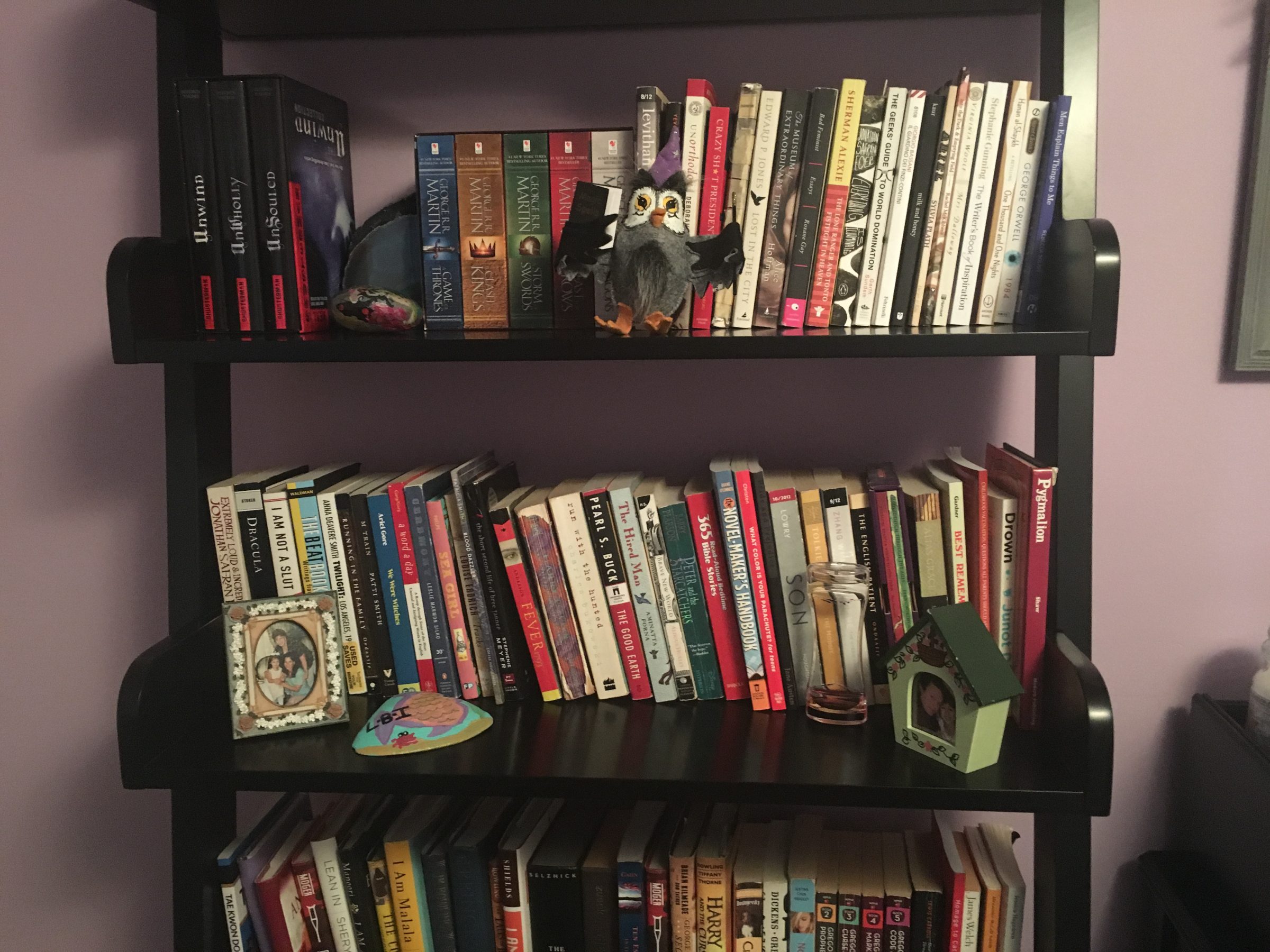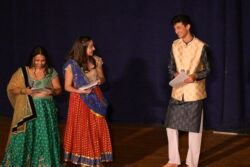It’s starting to feel like the collapse of Western civilization is upon us.
This week, I read a pocket-sized, 79-page book called The Collapse of Western Civilization: A View From the Future by Naomi Oreskes and Erik M. Conway.
I originally bought this book for a class that I ended up dropping my first semester freshman year. But, with the apocalypse closely approaching (I’m only somewhat kidding), it felt like a fitting choice.
A glass bottle with a message rolled up inside it graces the cover of this book, with a desolate desert and cloudy sky behind it.
The introduction claims that the book blends the genres of science fiction and history to “imagine a future historian looking back on a past that is our present and (possible) future.” It traces the climate change-induced descent of humanity from 1540 to 2093, a date near enough to scare but far away enough to feel believable.
The main message I took from the adamant authors was the ridiculousness of the idea that we—people from a past they wistfully recollect—had the information necessary to curb the effects of climate change, but chose not to do so because of the supposed essentiality of the free market.
Our lack of action has always seemed incomprehensible to me. I thought the facts about climate change were undeniable and attributed climate change denial to the larger trend of distrust in authority or questioning of facts occurring in our society today.
However, this book made it clear to me that our fixation on the “free” market disabled powerful nations when facing the polluted cloud hanging over the world’s proverbial head.
This book is told from the perspective of future historians living in the Second People’s Republic of China, recounting the development of the “Period of the Penumbra” (1988-2093) that led to the Great Collapse and Mass Migration (2073-2093).
The first chapter describes “The Coming of the Penumbral Age,” drawing together a story of fluctuation, misperception, willful ignorance, and disbelief.
For over 100 years before the fall of Western civilization, we knew that global warming, caused by human activity, was occurring. But people believed the atmosphere was able to absorb an unlimited amount of carbon dioxide.
When popular and scientific opinion changed, the world took some action in the 1980s and 90s.
However, the inconvenience of these undertakings caused intense backlash. Fossil fuel industry-funded critics preyed upon supposed “scientific uncertainties” to undermine the necessity of taking action, claiming that solving climate change cost more than it was worth.
Chapter two describes the conflict between scientists and society. Scientists were accused of being alarmist or acting out of self-interest to gain financial support and attention for their cause. They suffered public denunciations, threats, and immense pressure from governments and corporations.
Scientists felt it necessary to emphasize their credibility by holding research to ridiculously high standards. After all, “it was worse to fool oneself into believing in something that did not exist than not to believe in something that did.”
By 2012, over 365 billion tons of carbon had been emitted into the atmosphere from fossil fuel combustion and cement production, along with another 180 from deforestation. More than half these emissions occurred after the mid-1970s, when scientists determined that greenhouse gases caused global warming.
Once the temperature rise reached 4 degrees, rapid changes ensued. Heat waves, droughts, water and food rationing, one-child policies, depopulation of hurricane and tornado-prone regions, malnutrition-induced disease and infertility, starvation.
Destruction of food crops worldwide. Panic. Food riots. Mass migration of undernourished and dehydrated people. Massive growth in insect populations and subsequent disease outbreaks. Breakdown of social order. Government overthrows. Decreasing social capacity to deal with desperate people.
These descriptors feel chillingly possible.
Declaration of martial law. Struggles to maintain order and obtain necessary resources. But the unstoppable chain of events had already begun.
By 2060, the disintegration of the West Antarctic Ice Sheet caused sea levels to rise and displaced 1.5 billion people globally.
The Second Black Death caused widespread casualties and drove 60-70% of species to extinction.
Around 2090, Japanese genetic engineer Akari Ishikawa developed a lichenized fungus that consumed atmospheric carbon dioxide. She deliberately released this fungus from the lab, spreading across the world. Within two decades it had altered atmospheric carbon dioxide levels, sparking the world into recovery.
Thus, people could begin to regroup and rebuild.
At the end of this chapter, the authors state offhandedly: “the human populations of Australia and Africa, of course, were wiped out.”
Chapter three focuses on the power of fossil fuel industries and those connected with them to influence the action that was taken, or not taken, to combat climate change.
Power resided with political, economic, and social institutions that had an interest in continuing the use of fossil fuels, rather than the people who understood climate science.
A network of powerful industries challenged scientific knowledge, making an effort to promote the so-called uncertainty of science and foster complacency.
Scientists continued with their work, rather than speaking out, believing that evidence alone would suffice. At the same time, a large segment of Western culture rejected knowledge in favor of market fundamentalism (also known as neoliberalism). Market fundamentalists believe that a free market best serves people’s societal needs, satisfying material wants without threatening personal freedom.
At the end of the Cold War, waves of deregulation vested power from workers and consumers and placed it in the hands of the elite.
But neoliberals refused to admit that market failure was a real limit of capitalism. Markets couldn’t solve acid rain or depletion of the ozone layer. To solve those problems, government intervention was necessary.
Neoliberals were hostile toward planning and believed in the power of markets to respond to social problems as they arose. As such, governments simply resigned themselves to disaster management rather than advance planning.
Paradoxically, neoliberalism’s hold on society eventually led to a situation that necessitated large-scale government action—to relocate displaced people, contain contagion, and prevent famine—when it was founded on the principle of ensuring individual freedom above all.
Throughout the book, the authors used defamiliarization as a framing device, looking back on a society to which they have a tenuous connection at best, with a detached and observant gaze. But they seem reluctant to overstate this concept, and as a result, it doesn’t come through enough.
The whole framing premise gets mostly sacrificed in favor of a darkly ironic and unsettling summary of the unfolding of climate change. The concept of defamiliarization could really lend itself to a rich and detail-oriented work of fiction, but this just read like a useful introduction to climate change.
As such, I would recommend it as a little pocket guidebook. I had heard some of the information before in some form, but I had never examined the timeline of events in such detail before.
In high school, I was co-president of the Environmental Action Committee (EAC). Our faculty advisor was a stereotypical, middle-aged hippie who loved digging up weeds, wearing colorful clothing, and playing various drums. It was always hysterical watching him act out the entire Lorax play from memory, with different voices for every character. He was absent-minded, perpetually late to his classes, but nothing if not fervently passionate about the environment.
This club was a pretty bizarre community in the landscape of my high school experience. I spent an inordinate amount of time emptying the recycling bins from every classroom. We also de-weeded the last remaining piece of the Hempstead Plains, located in our school’s backyard.
I tried to keep my local community clean, but it can get kind of hopeless when you know it’s just a drop in the bucket, that your small efforts to recycle discarded bottles and cans won’t really do much in the face of an obstacle as monumental as climate change. That doesn’t mean we shouldn’t recycle, but it’s so frustrating that those with the real power to make change are cowering to the influence of people consumed with the ideal of a free market rather than the future of our planet.
The message of this book is clear: if we don’t forget our greed and realize the severity of the challenges we, as a world, face, then the outcome described in this book awaits us.
“Climate change is bad, and we should do something about it” is not a unique take. At all. And it shouldn’t be. We should all be talking about it. But in our current age, it feels like there’s so much to be concerned, outraged, disgusted, and anxious about. So many human rights abuses and structural injustices plague the world, rightly demanding time and attention. I just hope that, somehow, in the midst of all that, we don’t forget about the world itself.




